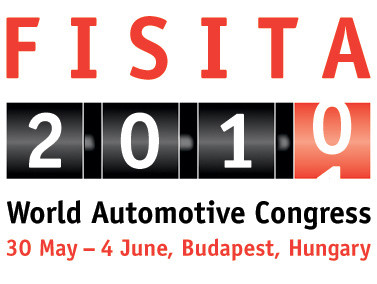ESI will speak at the World Automotive Congress FISITA 2010 in Budapest, Hungary
FISITA, biennial World Automotive Congress, is the international meeting place for automotive experts to present the latest technologies and to share information and achievements. FISITA 2010 will be held May 30 to June 04 in Budapest, Hungary.

ESI will contribute to FISITA 2010’s theme – Automobiles and Sustainable Mobility – with three different presentations providing engineers with knowledge and insights on developing cleaner, safer vehicles while meeting the needs of drivers and society and ensuring profitability.
ESI’s presentations will be given during the various congress technical sessions throughout the 4-day event.
1. The first paper entitled ‘Recent Integration Achievements in Virtual Prototyping for the Automotive Industry’ will be presented by Fouad El-Khaldi, ESI’s Industry Marketing and Solution Strategy Manager, on Monday, May 31 at 2pm during the ‘Efficient Production and Operation of Vehicles and Components’ session – H1-1.
Effective integration of the different Computer-Aided Engineering processes in the development of new vehicles is key to achieving high performance, robust designs in time and within budget. This paper will focus on recent achievements that make simulation more productive and more predictive. It will show in particular, how federating different domains under a coherent model accelerates simulation processes for multi-domain design targets; how virtual prototyping may account for manufacturing and assembly effects on geometry and material properties; how data management is important to track and propagate design and engineering changes across project teams.
2. The second paper entitled ‘Adjoint-Based Drag Optimization of a Passenger Car’ will be presented by Thomas Weninger, ESI Services Sales & Marketing Director on Tuesday, June 1 at 4.30pm during the ‘Styling, Aerodynamics’ session – B1-1.
An adjoint-based method applied to a surface mesh representation of a generic passenger car can improve its aerodynamic performance. Indeed, the computed sensitivity map is first used to identify those regions of significant optimization potential at the same time where shape changes do not significantly alter the design; the latter is a severe constraint for aerodynamic optimization in the car industry. Local morphing of selected regions proportional to the sensitivities, is then applied to generate an improved shape that leads to a reduced drag force.
3. The third paper entitled ‘Multi-Scale Modeling to Increase the FE Model Potential’ will be presented by Karel Beneš, from MECAS ESI, on Wednesday, June 2 at 8am during the ‘Advanced Engineering Technologies & Tools’ session – C1-1.
It is uneasy and ineffective in a standard Finite Elements code to run a model with regions of different levels of detail. Unfortunately, it is exactly what is often needed to have a physically realistic model with predictive failure behaviour and acceptable computation time. The Multi-Scale-Modeling in PAM-CRASH resolves this problem by means of the solver coupling technology. The model is split in several modules, each of them being computed separately and communicating through defined interfaces. Thus, computation runs on the basis of a standard model, and at the same time it contains details of selected parts. Effects like crack propagation or brittle failure can then be studied, which would be impossible on models used for standard crash simulations.
Delegates will also be able to find out more about ESI’s solutions for the automotive industry by visiting ESI’s booth in the exhibition area.
For more immediate information, please visit:
www.esi-group.com/virtual-performance-solution
www.esi-group.com/Fluid-Dynamics